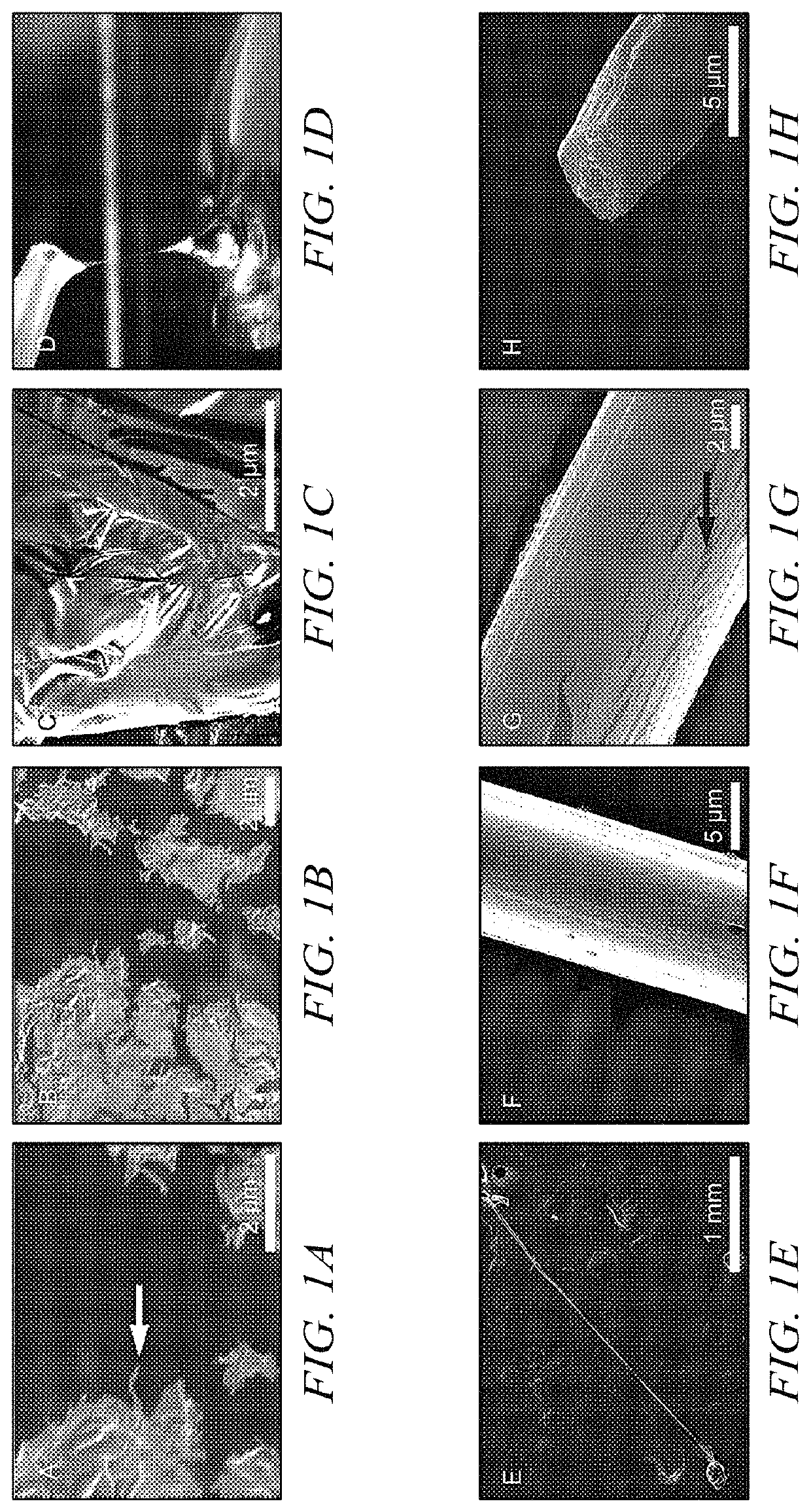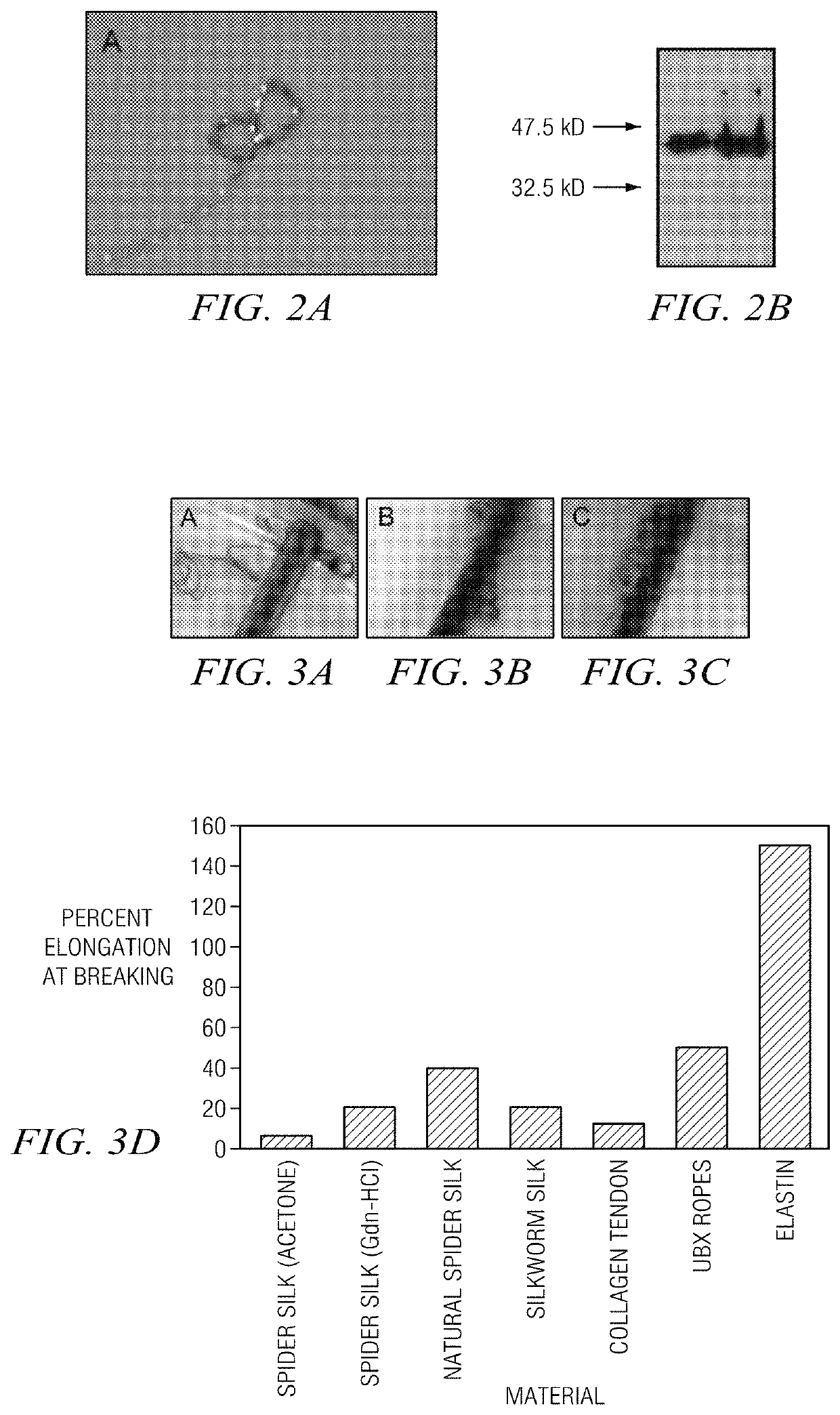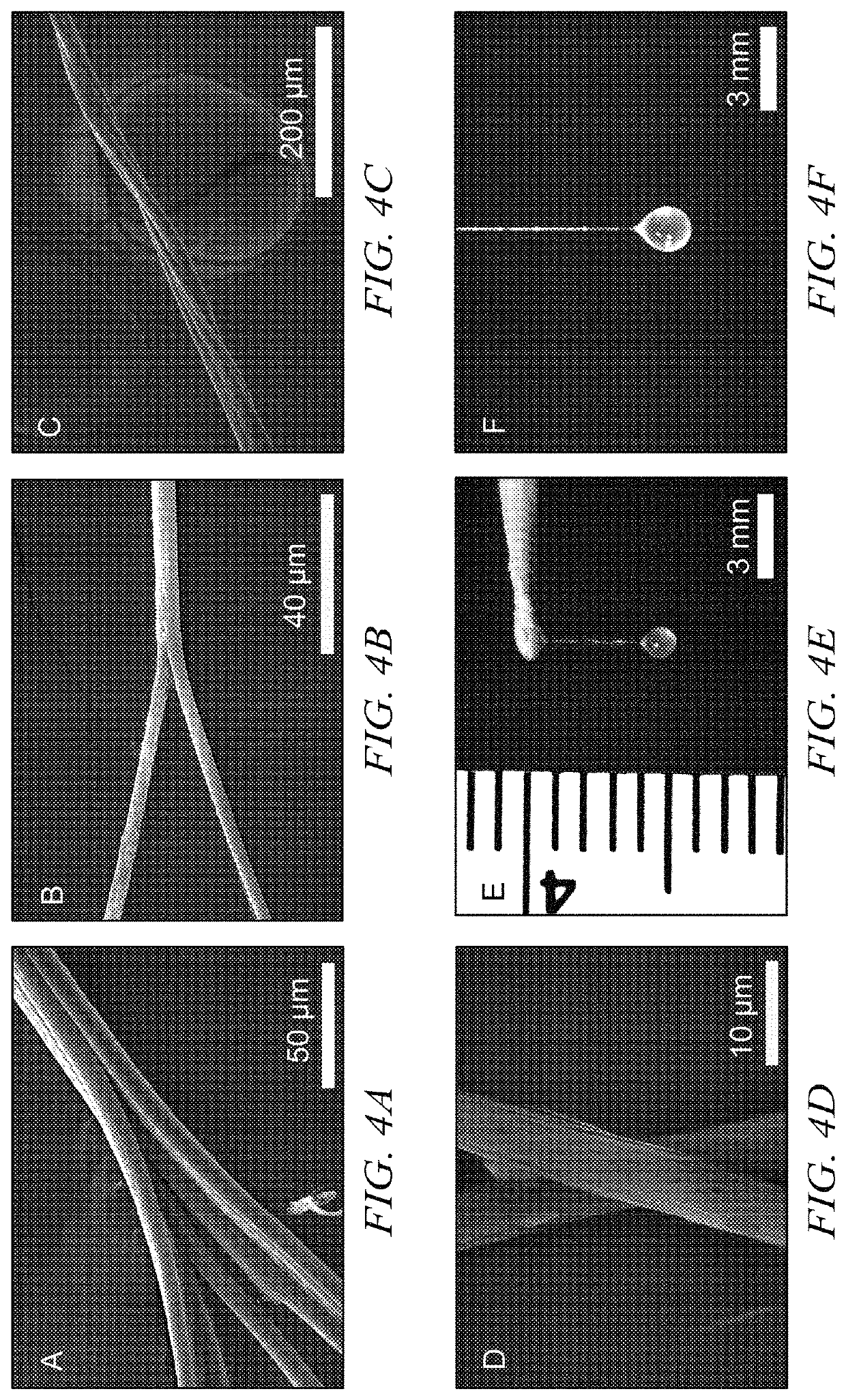Self-assembly of protein-based biomaterials with multiple morphologies
a biomaterial and protein technology, applied in the direction of peptides, drug compositions, peptide sources, etc., can solve the problems of limited sequence engineering, limited sequence engineering, and inability to assemble materials ex vivo, so as to reduce concentration, facilitate synthesis, and facilitate the effect of synthesis
- Summary
- Abstract
- Description
- Claims
- Application Information
AI Technical Summary
Benefits of technology
Problems solved by technology
Method used
Image
Examples
example 1
Plasmid Construction of Ubx and Deletion Mutants
[0060]Ubx splicing isoform Ia (Accession No. AAN13718; herein termed “Ubx”) and Ubx variants were cloned between the NdeI and BamHI sites in the pET19b vector (Novagen), which appends a His-tag to the N-terminus of Ubx. To generate C-terminal truncations, two consecutive stop codons were inserted into the Ubx coding region using the QuickChange site-directed mutagenesis kit (Stratagene).
example 2
Expression and Purification of Ubx and Ubx Variants
[0061]Plasmid constructs were transformed into BL21 (DE3) pLysS E. coli cells. E. coli cultures were cultivated in Luria broth plus 50 mg / ml carbenicillin and 30 mg / ml chloramphenicol (LB+carb) at 37° C. For expression, 10 ml of an overnight culture, inoculated from a single colony, was used to inoculate a 1L LB culture which was grown until the absorbance at 600 nm was between 0.6-0.8. Cell cultures were then cooled to 30° C., induced with 1 mM IPTG, and grown for a further 105 mins. Cells were harvested by centrifugation at 7000×g for 15 min. and stored at −20° C. in aliquots corresponding to 1 L of culture. Each aliquot was thawed at room temperature and lysed in 20 ml of lysis buffer (50 mM NaH2PO4, pH 8.0, 5% glucose w / v, 500 ml NaCl, 1 protease inhibitor tablet (Roche), 0.8 mg / L DNase I). Cell lysates were centrifuged at 18000×g for 20 min. The supernatant was loaded on a nickel-nitrilotriacetic acid (Ni-NTA) agarose resin col...
example 3
Production of Ubx-Based Materials
[0062]Ubx film. Ubx was diluted to 300 μg / ml using elution buffer. Ethylenediaminetetracetic acid (EDTA) was added to 10 mM to prevent amorphous aggregation unless otherwise stated. Ubx solution (100 ml) was placed at the surface of a siliconized coverslip at room temperature. Ubx film spontaneously forms at the air-water interface after approximately 1 hour.
[0063]In an alternate method, Ubx is pipetted into a reservoir of buffer containing 200 ml to 4 L of assembly buffer (5% glucose, 500 mM NaCl, 50 mM sodium phosphate pH=8.0). After approximately 4 hours, film will form on the surface. This system avoids the dehydration problems mentioned above, and thus film can be allowed to assemble for several days.
[0064]Ubx fiber. A needle or pipette tip was used to contact the surface of Ubx film produced either on a siliconized coverslip or a buffer reservoir and withdrawn slowly to draw ropes.
[0065]Ubx sheet. Ubx protein samples were concentrated to 1 mg / m...
PUM
| Property | Measurement | Unit |
|---|---|---|
| temperatures | aaaaa | aaaaa |
| diameter | aaaaa | aaaaa |
| diameter | aaaaa | aaaaa |
Abstract
Description
Claims
Application Information
 Login to View More
Login to View More - R&D Engineer
- R&D Manager
- IP Professional
- Industry Leading Data Capabilities
- Powerful AI technology
- Patent DNA Extraction
Browse by: Latest US Patents, China's latest patents, Technical Efficacy Thesaurus, Application Domain, Technology Topic, Popular Technical Reports.
© 2024 PatSnap. All rights reserved.Legal|Privacy policy|Modern Slavery Act Transparency Statement|Sitemap|About US| Contact US: help@patsnap.com










